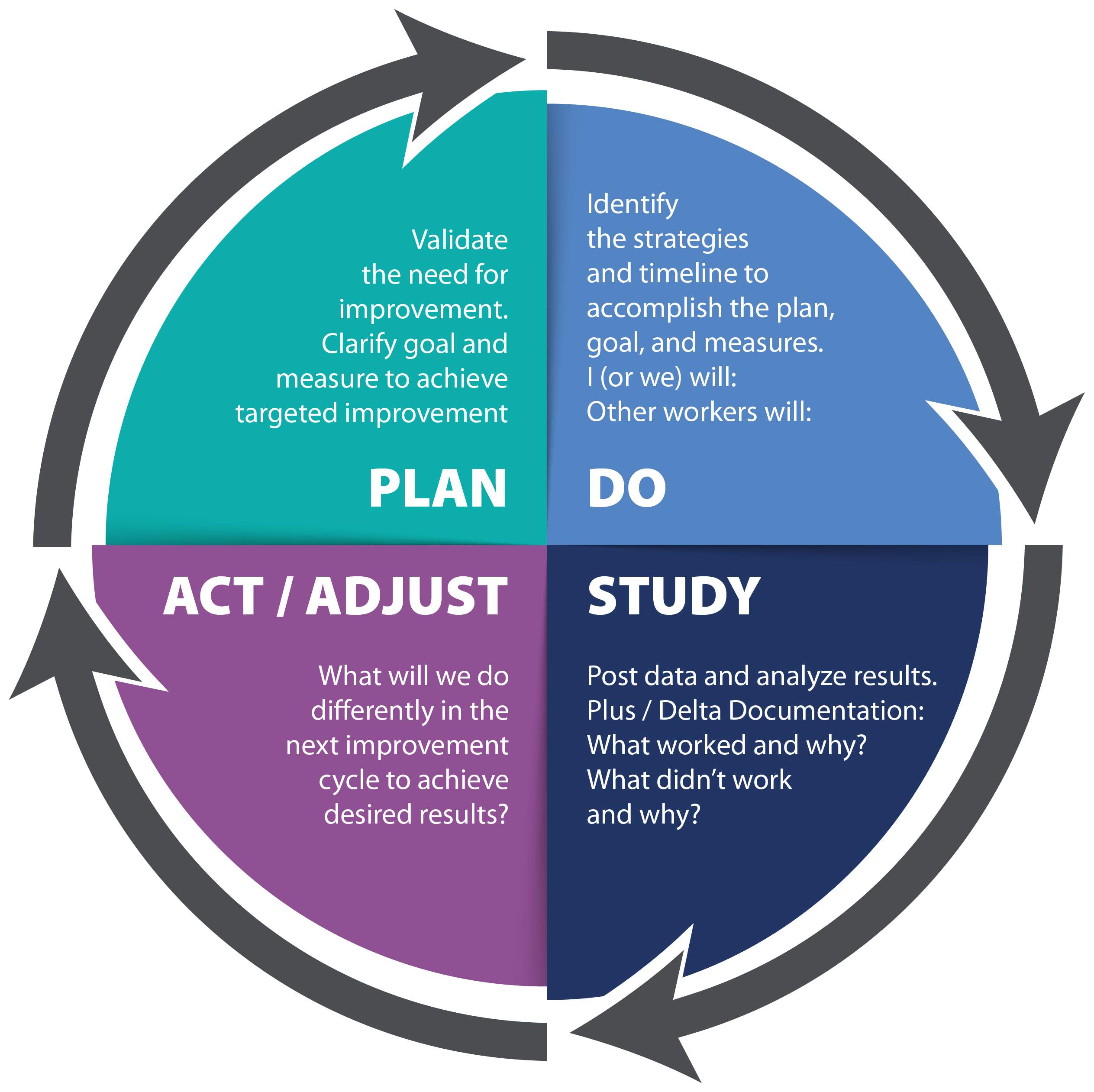Implement the PDSA Process for Continuous School Improvement

Without continual growth and progress, such words as improvement, achievement, and success have no meaning.
– Benjamin Franklin

INTRO
The Plan, Do, Study, Act/Adjust (PDSA) cycle requires leaders to validate the need for improvement with clear goals and measures, identify the strategies and timeline to accomplish the goals and measures, study the implementation of the actions through both quantitative and qualitative data analysis, and then make decisions on what can remain in action or what needs to be adjusted in order to achieve the desired goals.
OBJECTIVES
- Understand and apply the PDSA cycle
- Identify and implement schoolwide improvement initiatives
- Sustain and expand a culture of continuous improvement
THE PDSA PROCESS

The Plan, Do, Study, Act/Adjust (PDSA) cycle is a continuous improvement process that helps educators implement and refine strategies to enhance student learning and school operations. It begins with planning an instructional or operational change, followed by implementing it on a small scale. Educators then study data and feedback to assess its impact before adjusting the approach for broader application. By using PDSA, schools foster a culture of data-driven decision-making, collaboration, and ongoing refinement, ensuring that initiatives are effective and responsive to student needs.
The templates are designed to help district, building, and teacher leaders connect their actions to measurable outcomes. Leaders are encouraged to collaborate in identifying a specific process where the PDSA cycle can be implemented schoolwide, whether focused on an academic goal or an operational improvement, such as refining dismissal procedures. Selecting a goal that engages the entire staff ensures a deeper understanding of each step in the PDSA structure.
Use the templates below to more deeply analyze your site’s measurable outcomes.
You will be prompted to create your own copy of the Google Doc PDSA template.
Once the initial PDSA cycle is in motion, leaders should gradually expand its use across grade-level teams and content areas, fostering a culture of continuous improvement. Celebrating early successes builds momentum and reinforces the value of the PDSA approach. Throughout implementation, leaders should serve as coaches and supportive advisors, guiding staff through the process and ensuring long-term sustainability. Most importantly, embracing the PDSA structure as a leader demonstrates a commitment to continuous improvement—essentially “walking the talk” of meaningful, data-driven progress.
Want to learn more? Check out these toolkit resources!
Build Unity Through Change: Engage Staff in Continuous Improvement Processes
Work Cycle for Teams: Keep Collaborative Teams Focused on Their Purpose & Goals
School Continuous Improvement Plan Template: Get Started on Focused, Customized, Sustainable Change
Stay in the Loop
Subscribe to Our Newsletter









Responses